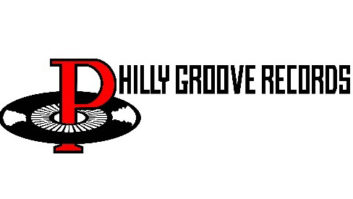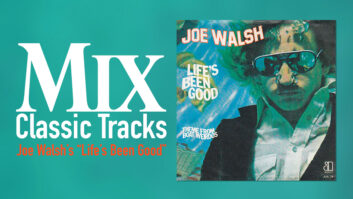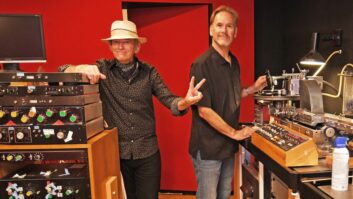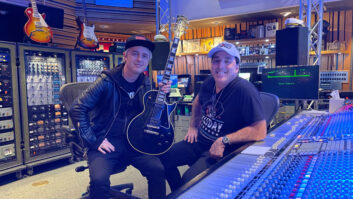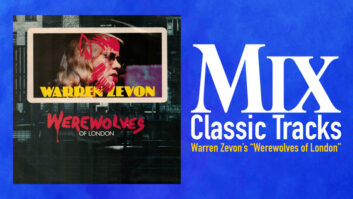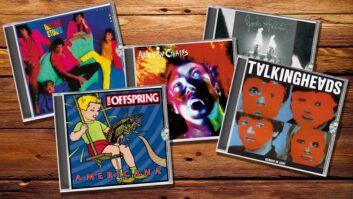Venice, CA—”I hope I never make another record like this again,” says Lucas McFadden, otherwise known as Cut Chemist. “If you had told me before I started that this is what it would take to make this record, I would have gone into a different business.”
McFadden’s Die Cut album, his second as a solo artist, has just been released on his own A Stable Sound label, 12 years after his solo debut, The Audience’s Listening. It features guest appearances by Biz Markie, members of Tune-Yards, Chali 2na, Hymnal, Laura Darlington, Edan, Mr. Lif and others.
“My first album was made in isolation; I was running away from group dynamics to make something that no one else had a hand in,” says McFadden, a DJ and producer who was a founding member of Jurassic 5 and Ozomatli and co-created Brainfreeze with DJ Shadow. “For this record, I was running away from isolation and back into a group dynamic. I wanted many people to have a hand in this—to sound like a band, a collaborative effort.”
The project began with McFadden recording his sample-based arrangements into Pro Tools. In 2010, he started playing the mixes to various people, including Carlos Gabriel Niño, a multi-hyphenate polymath with an extensive Rolodex who helped call in some live musicians.
“Drummer Deantoni Parks was the first studio session we did, over at Comp-ny in Burbank,” says McFadden. “Most of the live stuff was done there, to tape.” Subsequent sessions included Merrill Garbus and Nate Brenner of Tune-Yards, Farmer Dave Scher, Lonnie Marshall, Dexter Story, and Comp-ny owner Be Hussey, among others.
Industrial music is at the core of the album, which leans heavily on samples and live performances by French artists Vox Populi! and Pacific231 and is also layered with elements of psychedelic folk. Where it references hip-hop, it’s from McFadden’s favorite era, the early ’90s. “I wanted to make a songwriter/hip-hop record,” he says.
Benjamin Tierney did the initial mixes. “I did a round of mixes, but I’m never confident enough,” says McFadden. “So I said, who else can I get? Benjamin would bring his laptop over and do these incredible mixes.”
McFadden sat with the mixes for a year. “Then I said, what else can I do to this? Carlos said, ‘I got a guy.’ That’s his line!” he laughs.
That guy was Andy Kravitz, owner of Studio 4 West, located in an apartment building in Venice, CA. McFadden knew he was in the right place as soon as he saw the discs on the walls—Jazzy Jeff and Fresh Prince, Cypress Hill—and discovered Kravitz’s pedigree. “He’s from Philadelphia; he engineered a lot of early Philly hip-hop, records that I bought growing up, like Schoolly D, Cool C. He helped found Ruffhouse Records. This is somebody who has had his hand in hip-hop history. To have that touch on my album was an honor,” he says.
“And when I met Andy and saw this stuff,” he continues, looking around Kravitz’s control room, “I thought, of course this is where it’s going to end, with that drum kit and that board and those mics and that compressor and those Motown EQs. I’m surrounded by history here. The vibes and the energy coming off these museum pieces made their way into my record. It really brought it all together. And the vocal chain here is one of the best I’ve heard.”
For vocal overdubs at Studio 4 West, says Kravitz, “We were using the M 49 mic, the magical EMI France 1093 Neve modules, Pultecs, the Collins tube limiter.” The centerpiece of the room is a GML-automated Neve 8036 desk, originally from Romania. The drum kit, Jeff Porcaro’s from his time with Boz Scaggs, made it onto the record courtesy of Kravitz, who is also a drummer.

Early in the process, at his previous Venice facility, The Bunker, Kravitz put Parks’ drum tracks through his black-faced germanium Neve modules. “They were Roy Thomas Baker’s, used on the Queen records. It’s a really powerful EQ. When you push them, they sparkle and ignite,” he says.
Biz Markie’s rap was recorded in a closet at McFadden’s house through his Neumann mic. “We spent a lot of time cleaning up the grit of that M 149,” says McFadden. “It was the perfect mic—it gave him an underground, distorted feel. It really gave it an edge.”
Part of the album’s lengthy gestation period was spent figuring out how to seamlessly bring together sample and live musicians, says McFadden. “I spent a couple of years trying to marry the two worlds together. I’m very finicky about how those worlds collide.”
For instance, “How do my live drums sit on top of my sampled drums? If there’s any flamming, you’re out of here. It had to be right on top—and Deantoni Parks was. It was a dream come true to collaborate with a musician of that type,” he says.
Kravitz enjoyed the collaborative process. “Lucas brings you in to do what you do. One of my favorite dynamics of how we worked together was, he would be tweaking some edits and would hold the mouse up and hand it over. I’d go in and sizzle it up and do my ‘Andy’ thing. And 10,000 edits later, it’s a Cut Chemist record.”
The back and forth continued into the mastering process. McFadden has been working for about 12 years with mastering engineer Mike Marsh, who recently opened his own facility after 28 years at The Exchange in London. “But I’d never worked with Andy before, so these were different mixes than Mike was used to getting. He nailed most of them, but there were a couple where Andy said, ‘Let me give it a shot.’”
“Sometimes we were mastering the masters,” says Kravitz. “Then going back and tweaking the mix and re-mastering it. We checked it on multiple end-user formats—iTunes, an iPhone, on a laptop—uploading, then playing it back, all while watching the ’scope.”
Hogarth Guides First Rita Coolidge Album in 25 Years, by Steve Harvey, Apr. 25, 2018
“I said, ‘We have to try everything to find out what works,’” says McFadden. “I was happy we did. It was a long process, but, in the end, I want to know that it is absolutely the best version that we could put out.”
The final step was the vinyl mastering, performed by Simon Davey at The Exchange. “He did a great job,” Kravitz reports.
Initially the album was too long to fit onto four sides. Then Davey pointed out that the results would be brightest at the start of each side and would start to lose some of the high frequencies 10 minutes or so in, says McFadden.
“All the songs where I had dialed in the sparkle, the hi-hat goodness, were in the dead zone,” he says. “So I took ‘Die Cut (Wrap)’ off and it freed up all this room. Then I had to rearrange everything so that the songs that needed the sparkle were first on each side.”
When he received the recut sides, McFadden says, “On first listen, it sounded like his cutting needle was bad. He said, ‘That’s impossible, it’s brand new.’ I said, ‘But it’s different than the one you used the first time.’ He called me back; they’d sent him a bad one.”
“I can attest to the fact that Lucas hears everything,” Kravitz says. “I would move a dial one-tenth of a dB at 11k and he’d hear it.”
“Finally, we got the vinyl cut. I’m very proud of it. It sounds so good,” says McFadden.
But it was important to get the record—and not just the vinyl version—right, he says. “This record is going to be around a lot longer than I am. It’s got to stand the test of time and be relevant now and later. It was made over the course of so many years that it’s not rooted in one period. I think that helps it stay timeless.
“I’m glad I did it. But it goes to show how crazy I am, trying to be perfect.”
Cut Chemist • www.cutchemist.com
